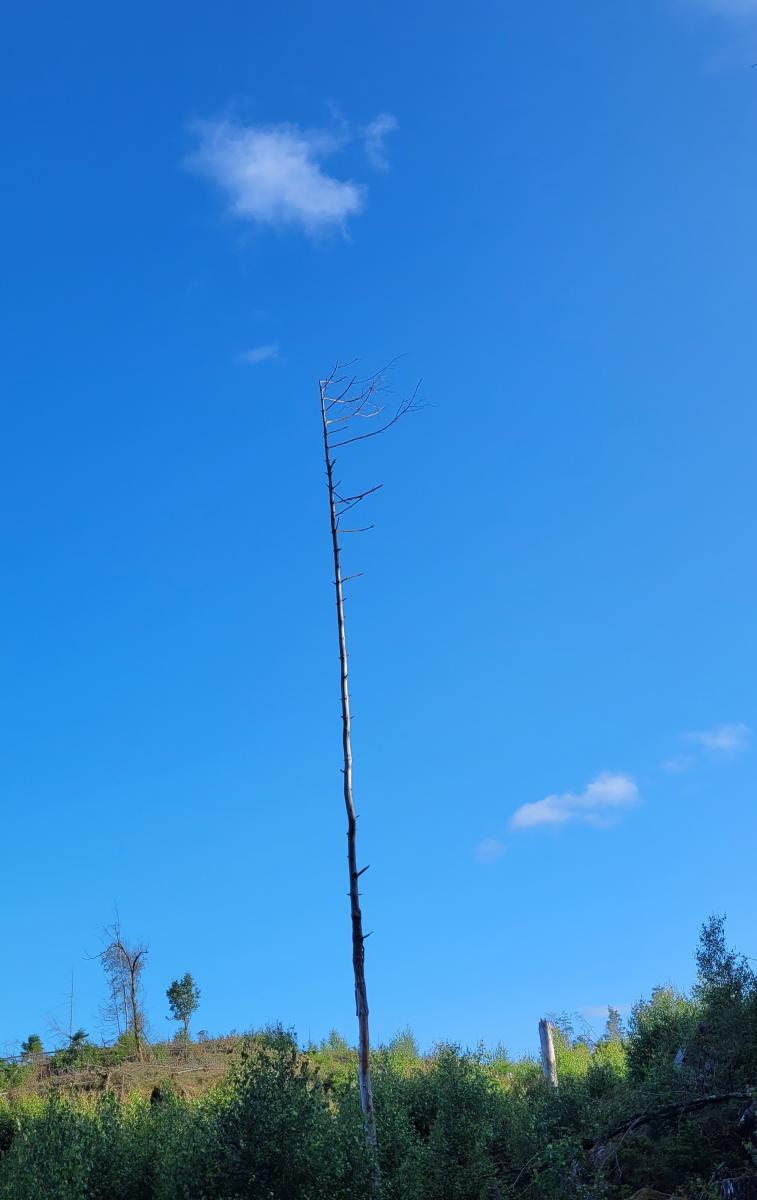Trees in the middle of the forest
These trees have been part of larger forests. Now they remain in a clear cut area with undergrowth and raspberry bushes, but once they were the tree in the middle of the forest. They have been left in a clearing after felling and are intended to remain in the forest until they naturally die in order to preserve and increase biological diversity. Sometimes these trees are called eternity trees. The forest lives its own life, but is influenced by humans, storms, fires and climate. In the artwork "Trees in the middle of the forest", the solitary trees once again form a projected forest together. Here, the trees get a new context, in a place far from their origin.
The painting and its materials represent a romantic way of relating to nature, a different kind of preservation that becomes part of the artwork. The paintings' placement, stacked and leaning against the wall, resembles more of objects than what one typically sees, hanging on a wall. They challenge with their turned-away positioning; the subject is the clumsy attempt to depict nature.
Before the forest was given a major role in the climate goal, it was associated with words such as: path, glade, pine heath, mixed forest, copse, bog, mire. Now there is talk of raw material for bioenergy, climate savior, carbon sink, timber storage, regeneration area, tract logging, consideration areas, biomass, key to a fossil-free future, a place for biodiversity. Words that alienate the forest from humans and turn it into an industrial place. The perception of the forest has changed, but people's connection to the trees still evokes emotions and memories. Is there a sustainable balance between the needs of humanity and the integrity of nature?


